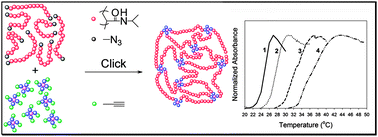“Click” PNIPAAm hydrogels – a comprehensive study of structure and properties†
Abstract
A detailed understanding of the structural and chemical features of hydrogels is vital when it comes to modifying and tailoring these materials into potential beneficial tools for different disciplines, such as


 Please wait while we load your content...
Please wait while we load your content...